Brushed DC motors provide high speed and torque, are simple to operate, and are generally inexpensive. But one characteristic that is often viewed as a drawback is brush wear, which can necessitate frequent maintenance and downtime, and in extreme cases, can result in motor failure.
Brushed DC motors are commutated mechanically, through the use of a commutator and brushes, which are attached to the motor’s armature (rotor). The brushes are connected to the power source, and the commutator is made up of individual segments that are attached to different rotor windings. As the motor turns, the brushes contact the different segments of the commutator, which energizes the windings in a specific sequence. This generates a dynamic magnetic field that allows the rotor to turn continuously as its poles are attracted to the opposite poles on the stator.
Mechanical friction between the brushes and the commutator, together with electrical erosion, will inevitably cause the brushes to wear. But while brushes do require periodic replacement, there are ways to extend their life and decrease maintenance requirements.
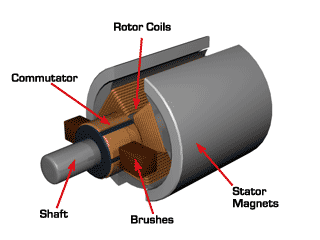
Image credit: electrical4u.com
Choose the right brush material
Most manufacturers categorize brushes as one of five types: carbon, carbon-graphite, graphite, electrographitic, and metal-graphite. Traditionally, brushes were made from carbon graphite, but new materials offer improved electrical characteristics that can prolong brush life. For example, electrographitic brushes have a lower resistance and can tolerate higher temperatures than carbon graphite. Metal-graphite brushes have low voltage drop, which makes them suitable for low-voltage applications. But in lower speed applications, graphite brushes are still a less expensive alternative to newer options.
Brush grade matters too
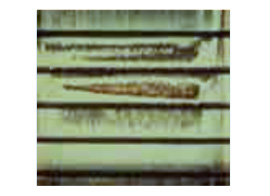
Image credit: Mersen
In addition to the material of the brushes, the choice of brush grade plays a factor in brush life. Brush grade indicates the brush’s mechanical and electrical characteristics, such as current density, hardness, and maximum pressure. If the brush grade doesn’t meet the application conditions, accelerated brush wear is likely to occur.
In brushed DC motors, a protective surface film of copper oxide and graphite forms on the commutator. This film results from the interaction of carbon dust from the brushes, copper from the commutator, and humidity. (High altitude applications require special brushes that can tolerate low humidity or that are doped with other materials to make up for the low humidity.) The brush grade affects the production of this protective surface film, which in turn, helps to avoid arcing and destructive sparking.
Check the mounting
Springs help maintain proper contact between the brushes and the commutator, and it’s important that all the brushes have equal spring pressure in order to maintain good current distribution. But as springs wear, the contact diminishes and current distribution can become unequal among the brushes. Therefore, it’s important to periodically check the spring tension with a force gage.
Alternatively, each brush can be mounted in a cartridge with a torsion spring that limits the brush’s travel and ensures that the proper force is maintained between the brush and the commutator. But even with cartridge mounting, it’s still important to confirm that the cartridge and brush are positioned properly. In either mounting situation, if contact between the commutator and the brushes is not maintained, sparking can result.
Avoid (or clean out) contamination
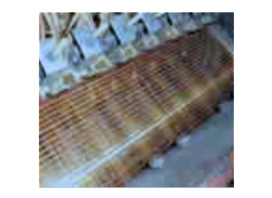
Image credit: Mersen
Particulate from the brushes and commutator help provide a protective film, but too much particulate, whether from the environment or from the components themselves, can interfere with the brush contact or cause detrimental wear of the brushes and the commutator. Periodic cleaning of both the brushes and the commutator helps to avoid this.
One special note on silicone contamination. For reasons that aren’t well understood, silicone causes extremely rapid brush wear. Therefore, it’s important to avoid silicone-based sealants or tapes, or other sources that can produce silicone vapors.

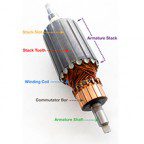
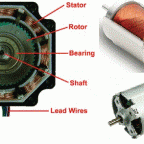

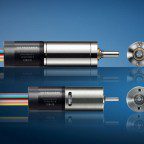

Leave a Reply
You must be logged in to post a comment.